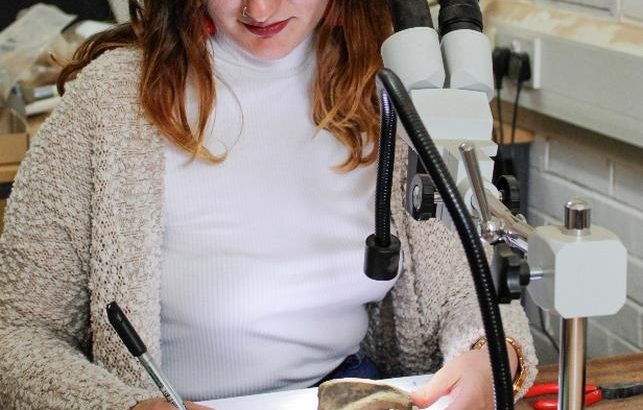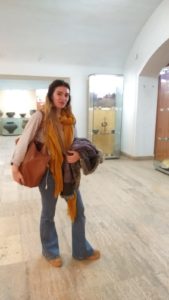
Over the past two years, SWW DTP has offered me the opportunity to strengthen my professional skills and gain insights into possible life careers by providing me with the chance to undertake two placements. The main aim in each was to learn how to process Roman pottery, meaning that I spent eight hours every day looking at more than 2000 year old pottery sherds. While I managed fulfil my intended learning outcomes, one may wonder why I chose to go through the same experience twice. In this feature I will explain how processing pottery can be the same, yet different and thus how two similar experiences can offer two unique insights.
First, the placements took place in two different countries! The first one was a smooth introduction into British ways at Southeast Archaeology headquarters in Brighton, while the second was a full experience of Romanian methods at The National Museum of Union, in Alba Iulia, the Capital of the Great Union of Romania. At Brighton, the senior ceramicist Anna Doherty introduced me to the quantitative and qualitative analysis of pottery, in a designated area for such task, where each sherd was recorded according to its fabric, form, typology, weight and estimated number of vessels. At Alba Iulia I built upon this information, learning more about the scientific side of pottery, through the help of George Bounegru and Dan Anghel, who explained the process of firing pottery and introduced me to pottery reconstruction. Therefore, the two placements offered me alternative ways of looking at pottery: while in Brighton I brought the sherds to life by describing their ‘biography’ on paper, namely were they shiny terra sigillata or local colour coated sherds, handmade or wheelthrown, a flagon or a beaker, whereas in Alba Iulia I brought the pottery to life sherd by sherd.

These two placements allowed me to gain experience in two professionally different contexts. While at Brighton I worked as part of a commercial archaeology company, Alba Iulia offered me the experience of operating into a museum. Each place came with adjacent benefits which added to my knowledge. Firstly, working for Archaeology South East meant that I had the opportunity to interact with the other specialists in the company and gain invaluable knowledge in other fields, such as geoarchaeology, zooarchaeology, and even archaeobotany. On the other hand, the museum setting in Romania allowed me to go to exhibitions and seminars organised by this institution, where I had the opportunity to listen to other research presentations and observe how an exhibition comes to life. Therefore, these placements came with additional benefits which besides strengthening core skills, also contributed to my general knowledge and professional experience.
In sum, I undertook these placements thinking that I would learn how to process pottery and gain invaluable skills for future career prospects. Upon later reflection however, I realised that I gained much more from this. I met new friends, I had the opportunity to hear about other people’s research interests, and I even got involved in organising an exhibition. I lived in new cities, discovered new cultures and overall became a more rounded individual. I would like to thank all the people and organisations who contributed to my experience.
Categorised in: Student Blogs